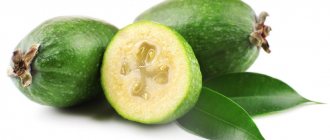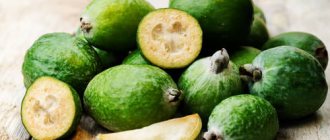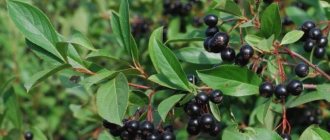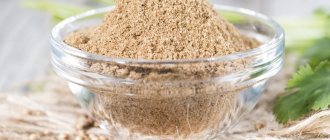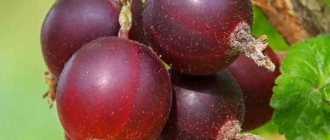General information
Many people are familiar with the name fig, however, this is far from the only name for this wonderful crop.
It is called fig tree, fig tree, wineberry, fig, Smyrna berry or simply fig. This is the name of not only the tree, but the fruits themselves. Figs are considered the most ancient cultivated plant. Initially, the cultivation of wine berries was carried out in Arabia, but after this they began to practice it in Syria, Phenicia and Egypt. The fig tree came to America only at the end of the 16th century.
As an understory, the wild fig tree grows not only in deciduous forests, but also on open slopes and mountain slopes in Georgia, Crimea, Armenia, Turkmenistan, Uzbekistan, the North Caucasus and Tajikistan.
Figs are a subtropical tree that belongs to the mulberry family and can grow up to 12 meters in height. The crown of this tree is quite spreading and wide. The trunk of the fig tree is dark gray in color. Fig leaves are quite large, growing on long petioles; they are rough and slightly drooping on the underside. The leaves are dark green at the top and much lighter at the top. The stems and leaves contain milky juice.
This tree has a very developed root system. Figs are not picky when it comes to choosing soil for growth, so they can be grown anywhere.
It should be noted that the fig tree is a very close relative of the indoor ficus. In indoor conditions, it does not grow to such large sizes as in nature, but reaches only two meters in height. Not all varieties bear fruit indoors, but such as: Honey or White Fig, Oglobsha, Kadota, Violet Sukhumi, Solnechny, Dalmatian and Sochi.
The color of the fruit depends on the crop variety; their color can fluctuate between yellow and dark blue. The most common are yellow-green fruits. Their appearance is very similar to a pear, but the sizes vary. Figs can be the same size as walnuts or several times larger. Unripe figs are inedible. The taste of wine berries can be cloying or moderately sweet.
How to choose
First of all, you need to take the fruit in your hand, because this is how you can understand how dense it is. Nowadays, finding tasty, ripe and, of course, fresh figs is quite a difficult task. The old fig tree is most often found on the shelves, which is why it is important to feel the fruits. There shouldn't be any dents on it. Fresh figs should yield easily to pressure.
How to store
It should be noted that figs are a very perishable product, so it is recommended to consume them as soon as possible. It follows from this that this culture cannot be stored. However, it can sit in the refrigerator for some time, but not more than three days. In order for the fig to be stored as long as possible, it is dried. It’s quite simple to “revive” figs; all you need to do is dip them in boiling water or steam them for a while. The fig tree can be dried.
In cooking
Sugar figs make very tasty marshmallows, jam, preserves, marmalade, cakes, sweets, ice cream, all kinds of drinks and gingerbreads. But the fruits of this plant go well with cheese, meat, eggs, nuts and ham. Note that nutmeg, ginger, cinnamon and figs are a great addition to any omelet. After the figs have soaked, you can stuff them. To do this, you can use grated cheese, which can be mixed with eggs, sugar or nuts. Then it can be baked in the oven and served topped with sour cream or melted butter. You can try a more interesting dish: figs with bacon. To prepare it, you need to cut the figs and bacon and attach them to cocktail sticks, and then lightly fry them.
Figs are even used to make homemade wine.
Reflection in culture
Many historians believe that the fig tree was the very first plant cultivated by man. The fig tree has been known since ancient times, and it has been cultivated for about 5 thousand years. There is an opinion that the wine berry was first introduced into cultivation on the very fertile lands of the Arabian Peninsula. Currently, wild figs also grow in these areas.
Video on our channel How to increase hemoglobin. Anemia, signs and symptoms of low hemoglobin.
Look
What are figs
Many people wonder what figs are. Figs are a plant that grows in the subtropics. It belongs to the genus Ficus and the Mulberry family.
Another question that interests many is: are figs a fruit or berry? It contains a lot of seeds, so it is often classified as a berry. However, berries grow on herbaceous and bushy plants, while figs grow on trees. It also cannot be classified as fruit. Figs are not a berry, a fruit or a vegetable. The fig is actually a plant called Ficus carica. It has the shape of a circle or oval, and also has a very thick peel.
What does a fig tree look like?
Also, some people don’t understand: figs and figs are the same thing, and in general, what kind of fruit is a fig? Figs and figs are the names of the same fruit. And whether it is a fruit or a berry is described below.
What is another name for figs?
The plant in question has numerous names. It is called differently in each country. In Russia it is called a fig tree, since its fruits are figs, fruits. In another way, figs are called figs, and the tree is called a fig tree. Some make wine from it, which is why another name for figs appeared - wine berry.
Recipes
Strudel with figs
Homemade strudel with figs
The strudel is amazingly good, melts in your mouth and makes a great addition to your morning coffee.
Sauce for fig meat
Sauce for fig meat
The sweet notes of figs perfectly highlight the taste of baked duck. The standard recipe uses apples, which can be effectively replaced with our sauce
Common fig
Feijoa is a fruit or berry - where it grows and what it looks like
The common fig is a woody plant. It looks like a shrub or woody tree. Its leaves are large and whole. Cultivated species are a full-fledged tree that can grow to a height of 4 m or more. A distinctive feature of the plant is that its flowers are dioecious. Women's ones have the shape of a ball, pear or flattened shape. There is a small hole at the top. When the flowers are pollinated, many fruits appear. They are nuts that are surrounded by juicy pulp. The color of the fruit can range from yellow to dark. A yellowish-green tint is common.
What does a fresh fig tree look like?
White figs
White figs have thicker skin. Its flesh is yellow or red. Wine berries with yellow pulp are more tasty. It is consumed dried and also boiled in the form of jam.
Limitations and harm
The most controversial issue is the harm of figs. The fact is that the fig tree fruit contains a high percentage of sugar. Sometimes this figure can exceed 70%. This content may be dangerous for people with diabetes. However, the special composition of figs inhibits sudden surges in blood sugar.
Fresh fruit has a glycemic index of 55. Dried delicacy – 65. This should be taken into account by people with health conditions. Fresh figs will give the body 49 kcal. When dried, the figure increases to 257 kcal. People who are trying to lose weight should limit their consumption of dried fruits.
Wine berries can cause an allergic reaction. Therefore, carefully introduce the fruit into the children's diet. And also limit its consumption during pregnancy and lactation.
What are figs rich in?
Medlar fruit - what kind of tree is it, care
Figs are a plant rich in vitamins and minerals. If you use it on a regular basis, it will have a beneficial effect on the entire body. It contains the most vitamins B6 and B5. This is beneficial for increased fatigue, headaches, and frequent colds. It is also useful for the cardiac, digestive, and respiratory systems.
However, it can also cause harm to the body. It should not be used for acute and inflammatory diseases of the stomach and intestines, as well as for those who suffer from diabetes, urolithiasis, obesity, and pancreatitis. It should be used with caution during pregnancy and breastfeeding.
Interesting facts about wineberry
Fig tree blossom
Wild figs have a rather interesting method of reproduction. There are two types of inflorescences on one plant. Some inflorescences consist of female flowers and from them edible fruits develop - figs. Other inflorescences contain male and female flowers, from which inedible caprifigs are born.
The flowers of the fig tree are pollinated by wasps - blastophages, which cannot reproduce outside the flowers of the fig tree . The females of these wasps are fertilized inside the flower and after fertilization climb out, while carrying pollen from the male flowers on their bodies. This phenomenon is a vivid example of natural symbiosis.
In ancient Egypt, domesticated monkeys were used to harvest figs. The animals picked the fruits and gave them to the man who was under the tree
The fig tree is often mentioned in the Christian religion, and in Buddhism it is a symbol of insight, since under the fig tree Buddha learned the meaning of life.
In addition to the fruits, fig tree leaves can be used for treatment. The juice of finely chopped leaves mixed with butter relieves itching from the bites of blood-sucking insects. Also, the juice of the plant can remove warts and get rid of fungal skin diseases.
In conclusion of the article, it is necessary to recall that the benefits of this berry are due to the rich set of vitamins and minerals that allow the fruits of the fig tree to be used to treat many diseases
However, you should not self-medicate and before using figs as a medicine, you should consult a doctor in order to safely enjoy delicious figs.
You can watch a video about the benefits and harms of figs using the link below.
VIDEO: 10 HEALING PROPERTIES OF FIGS! Benefits and taste that cannot be expressed in words
All about figs
Figs - what kind of plant is this? This is a deciduous crop that belongs to the genus Ficus.
Which family does it belong to?
Fig tree or fig - description of what the fruit looks like
Figs belong to the Mulberry family. This plant is one of the oldest cultivated plants. It was first grown in Arabia, then in Phenicia, and then until now in Syria and Egypt.
What does he look like
The fig tree is a large plant that grows up to 8-10 m. The bark of the fig plant is light and smooth. The diameter of the column can reach up to 18 cm. The roots grow up to 15 m in width and up to 6 m in length.
Fig leaves
Fig leaves are large in size. They can be dark green to grayish green in color. The leaf grows up to 15 cm in length and up to 12 cm in width. They are alternate, three, five, seven pollen-lobed or separate and rigid with falling stipules.
Short shoots grow in the axils of the leaves. They contain inflorescences of two types. The first ones are called caprifigs, and the second ones are called figs. They grow on various trees. Their axis grows until they form a ball with a hole at the top. They are hollow inside. Dioecious flowers develop there.
Fig fruit
Figs grow into juicy and sweet fruit. They are pear-shaped and have many seeds inside. Fig fruits are covered with thin skin. There are numerous hairs on it. There is a hole on top of the fruit that is covered with scales. The fruit can range from black-blue to yellowish.
For your information! Fresh fruits contain up to 24% sugars, and dried ones up to 37%.
Fig ripening season and storage conditions
Each fig tree is like a work of art.
These amazing trees give their owners two harvests a year! The fruits ripen first in late June - mid-July, and then in August-September. The former are obtained without pollination, and the latter - with its help.
The only drawback of figs, in my opinion, is that they spoil very quickly (just imagine that ripe fruits are stored for only 10-13 days after harvesting), and therefore they are picked almost green, and even processed with all sorts of things.
In addition, pre-harvested fruits will never become truly sweet, juicy and aromatic, and therefore buyers of imported fruits have to chew tasteless rubber. For this reason, if you live in Russia, I do not advise you to buy fruits brought from distant countries. Give preference to nearby regions and countries.
Yes, figs spoil very quickly. The peel of these fruits is very delicate, they contain a lot of sugar, and at the bottom there is a small hole through which voracious bacteria and insects penetrate inside. It turns out that not only people love to feast on this miracle of nature!
If a fig has been lying in the sun for a long time, stored for a long time, or has been severely deformed during transportation, then fermentation processes begin in it, which are actively used for the production of alcoholic beverages. Wine berry after all!
If you don’t want to get drunk from eating these fruits, you need to learn to distinguish quality figs from spoiled ones. Be sure to smell the fruits you are about to purchase.
A sour, as well as alcohol-like smell indicates that the processes of rotting and fermentation have already begun inside them.
Also carefully examine the skin of the fruit - if it is damaged, then you should not take them for the reasons I described above. It is worth paying attention to the degree of moisture in the fig peel. If it is wet, sticky or slippery, then pass by such fruits - they have clearly been overexposed.
To the touch, high-quality figs are elastic, but not hard - when you press them with your finger, shallow dents should remain on the surface.
There is no point in storing ripe figs - it is better to deal with them, as they say, without leaving the cash register, that is, immediately on the day of purchase or at most the next day. Of course, the refrigerator will slightly extend the shelf life of these capricious fruits, but not for long - just a couple of days. And then only on condition that you put them in an open container from which moisture will evaporate.
How to select and store dried figs?
If you love figs as reverently as I do, then you probably have a hard time passing by their dried fruits. Now I’ll tell you which dried fruits you should not only pass by, but even run past, and as soon as possible!
Quality dried figs should be matte, not shiny, beige or light brown in color. If there is a small white coating on the fig buns, do not be afraid of it - this is glucose.
Avoid deformed and spotted specimens - most likely, they will taste unpleasant, not only in appearance. The best thing to do is try to mash the dried figs with your hands - carefully, without using excessive force. We are interested in soft fruits.
If these dried fruits taste sour or salty, feel free to throw them away or take them back to the careless seller. High-quality dried figs are sickly sweet.
Naturally, purchased dry fruits should be thoroughly rinsed under running water and then placed in warm water for half an hour. Firstly, the fruits will become juicier and softer, and, secondly, there will be less dirt and chemicals, if there were any.
It is best to store dried figs in a glass jar with a tight-fitting or screw-on lid. It is important to keep them dry, otherwise they will become damp and rot.
Back to contents
How and where figs grow and bloom
Fig trees are divided into male and female. Pollination is carried out by black blastophagous wasps. The inflorescences have small holes through which pollination occurs. Edible fruits grow only on female representatives. Fig fruits are shaped like a pear. They can reach up to 10 cm in length.
Note! Unripe fruits cannot be eaten. This is due to the fact that they contain latex, which is harmful to the body.
A ripe fruit contains from 30 to 1600 seeds. If growing conditions are favorable, a fig tree can bear fruit for 200 years. Flowering can occur several times a year. Fruit set occurs at the end of the warm season from summer to autumn.
The fig tree was first cultivated 5,000 years ago. Its homeland is Saudi Arabia. There it is widely used in the food and medical industries. Over time, the fig tree began to spread throughout Europe and the Canary Islands. Around 1530 the fruits were tasted in England. The seeds were then transported to South Africa, Australia, Japan, China and India. In 1560, the fig tree began to be grown in the USA and Mexico. Figs are also common in the Caucasus (Georgia, Armenia, Azerbaijan). It is grown on a large scale in Turkey, Greece, Italy and Portugal.
In Russia, the fig tree grows on the black coast in the Krasnodar region and on the island of Crimea. It has been growing there since ancient times. The fig tree bears fruit where the climate is warm and dry.
Figs are the oldest plant
The best varieties of figs for the Middle Zone
The varieties of wine berries that grow best in the conditions of the Middle Zone include:
- Crimean black. Has an average ripening period;
- Dalmatian. Bears fruit twice a year;
- early gray The fruits ripen early;
- Randino. Fruits twice a year.
Note! The ripening time of figs depends on the conditions and region of growth. The fruits ripen in two stages. On average, this happens for the first time in June, and the second time in September and October.
Ripe fruits increase greatly in size and have a bright color. Nectar droplets appear on the peel.
Use of figs in cooking
If there are no fresh figs on the horizon, I take dried or chocolate ones.
I confess to you, dear reader, that I feel extremely sorry for the thermal processing of this wonderful product, and therefore I eat it only in its original form and try to buy it in regions where figs grow.
Of course, my diet also includes dried fruits of this plant, since, alas, I cannot eat fresh ones all year round.
I advise you to buy dry figs only in raw food and organic stores - this way you will have a better chance of purchasing a product that has not been treated with chemicals.
Please note that the manufacturers of figs that are on the shelves in supermarkets do not even hide this - the composition always indicates the substance with which the fruit was stuffed. All you have to do is turn the packaging over and carefully read the ingredients.
Below I will definitely tell you how to choose fresh and dried figs so that they not only please you with their taste, but also benefit your body. Now let's talk about what this miracle of nature can be combined with.
Wine lovers use figs as a snack and even make alcohol from it (wine, tinctures, liqueurs), but I hope, like me, you don’t drink alcohol, and therefore I suggest you, dear reader, try adding these fruits to a salad.
A snack with figs can be more than just sweet, although it fits perfectly into green smoothies, smoothies and salads. Try combining it with avocado, soft cheese, nuts, celery, asparagus, mushrooms, cherry tomatoes, paprika, coconut, chickpeas. Play with dressings using honey, lemon juice, natural vinegar, and various unrefined vegetable oils.
For spices, you can use dried Provencal and Italian herbs, Himalayan salt, allspice, and fresh ginger root. Figs also go well with herbs - cilantro, mint, basil, lettuce, spinach, arugula, celery. I think in some cases you can add a little green onions or wild garlic to a salad with these fruits - you get a very piquant combination of flavors.
Figs, like other dried fruits, can be stuffed with nuts and pieces of cheese, and then served with sweet sour cream sauce. Unless, of course, you still consume dairy products.
I know that figs are often added to various fruit and berry sweet and sour sauces: apricot, cranberry. Also, sometimes it serves as the basis for such a fragrant dressing, which is eaten with spaghetti or vegetables - baked, fried, steamed.
You can include fig pieces in vegetable stew, as well as in cream soup - it will add a sweet, original note to the first dish of pumpkin, broccoli, cauliflower, and mung bean.
In some countries, a coffee surrogate is made from these fruits - a coffee drink.
I have been eyeing fig jam for a long time, which is sold in one of the large stores in my city. Through the transparent walls of the jar, such familiar and beloved seeds look at me, but I am in no hurry to buy it, because I am afraid of being disappointed. Still, I am in love with fresh figs, and not with that mess that is drowning in white sugar.
Pastilles, jams, confitures, marmalade, and marmalade are also prepared from these fruits. They are used as a filling in gingerbreads, cookies, and candies. I confess, at one time I could not pass by the chocolate-covered figs - they were in pieces and crunched so deliciously in my teeth.
If you still eat flour, try making strudel using these fruits. In Andalusia, fig bread, also called fig bread, has long been baked. It is believed that the tradition of preparing this type of pastry was adopted by the Spaniards from the Arabs. In addition to the fruits of the fig tree, almonds, anise, cinnamon and cloves are put into this bread, but no sugar is added - the sweetness of the fruit is enough. Since such a product is stored for quite a long time, it was previously used as canned food so that the harvest would not be lost.
Of course, it is best to eat these fruits raw without the need for storage. Could there be anything tastier and healthier than what nature itself created?
Back to contents
How to pick figs: green or ripe
Ripe fruits are picked by hand. This is due to the fact that the fruit is very tender. It has a thin skin and very soft flesh inside.
Important! It is necessary to collect fruits only early in the morning and wearing gloves. This is due to the fact that the existing hairs on the leaves under the influence of sunlight can cause a burning sensation on the skin.
The fruits are collected carefully. It is necessary to collect only ripe ones, so it cannot be consumed in an unripe form.
What does ripe fig look like?
Distinctive features and characteristics
The height of the fig trunk is usually 10-20 m. The roots are woody, powerful, and go quite deep into the soil.
The flowers of the common fig are dioecious and are found in inflorescences. Inflorescences are flattened, pear-shaped, spherical. The flowers are inconspicuous and small in size. The tree grows up to 10-12 meters.
Figs can survive for more than a hundred years.
If the crown of a tree is well formed, then the tree attracts with its exotic appearance. The tree has large 3-5 lobed leaves, the upper side of which is hard and rough. The young shoot has a bright green stem. Old branches and trunk are gray-green and brown.
The fruit has a small pear shape. The fig fruit has a thin skin and is a small achene. The color depends on the variety and can be red, white, purple-black and yellow. The taste of the fruit is delicate and sweet. In 100 grams of figs there are 56 kilocalories, which make up the energy value of figs.
What are the benefits of figs for women?
Eating the fruits of the plant in question is beneficial for women:
- reducing the likelihood of developing varicose veins and the appearance of spider veins on the legs. Ficin, contained in fruits, strengthens veins and blood vessels, and also improves blood circulation;
- they contain folic acid. It is a valuable substance for bearing a child. The acid helps preserve the placenta and has a beneficial effect on the fetus. It also treats anemia;
- have a laxative effect. Therefore, it should be used for problems with bowel movements;
- in nursing mothers, consumption increases lactation;
- During menstruation, fig tree will reduce pain.
Chemical composition
This medicinal plant in its fruits contains fats, pectin, proteins, sugars, citric and malic acids. The fruits also contain folic, pantothenic acids, and anthocyanin glycosides. There are vitamins C, PP, B1, B2, B6, as well as useful substances such as copper, iron, magnesium, potassium, calcium and phosphorus. It contains more iron than apples. There is also a lot of potassium.
The leaves of the plant contain a lot of psoralen, furocoumarin and bergapten. Resinous and tannin elements were found in them. There is essential oil, in addition to rutin and ascorbic acid.
What are the benefits of dried figs?
Fresh figs cannot be stored for more than three days, so dried fruits are most often made from them. But even in dried form it contains a huge number of useful components.
Important! 100 g of dried fruit contains the daily requirement of vitamin B.
The dried product is used in the following cases:
- when blood pressure is high;
- to make bones stronger;
- for colds;
- for the prevention of cancer.
Figs with milk for cough
In folk medicine, for coughing attacks during colds and whooping cough, a decoction of figs in milk is used. The course of treatment should be continued for 10–15 days, the drug will relieve cough and increase the body's resistance to respiratory diseases.
Recipe for figs with milk:
To prepare a healing drink, you need to take 1.5 liters of pasteurized milk with a fat content of 3.2%, pour it into an enamel pan, heat it, place one medium-sized well-washed fresh or dried fruit in it, and bring to a boil. With the lid tightly closed, the mixture should be kept for 0.5 hours over low heat until the volume is reduced by about 1/3, then cover the pan to steam the figs and leave it until it cools completely: 3–4 hours is enough for the figs to give up all their beneficial properties .
The product must be stored in a jar, tightly closed with a nylon lid, in the refrigerator. You cannot prepare more than 0.5 liters of the drug; on the second day it will thicken and be a little viscous.
What are the benefits of figs for men?
Men can consume the fruits of the plant in question to increase potency. Its effect on men's health is as follows:
- increased production of happiness hormones;
- prevents blockage of blood vessels;
- restores strength after sex;
- increases arousal.
Just as a general tonic, the fruits can be consumed in the following cases:
- fight against anemia;
- strengthening teeth and bones;
- restoration of strength;
- diuretic effect, etc.
Composition and presence of substances
The composition of different varieties differs little - including the slight difference between green and purple figs. Much more significant is the fact whether the fruit is consumed fresh or dried.
Vitamins
Thus, vitamin C in fresh fruits contains about 2 mg, B5 - about 0.3 mg (per 100 g of product). When dried, these vitamins are destroyed without a trace. But there are significantly more others per unit mass: B9 four times, E three times.
Let's take a closer look at what vitamins figs contain (the number in brackets indicates how much vitamin is in 100 g of fresh figs):
| Vitamins | MG | Effect on the body |
| A | (7 kg) | to improve immunity, strengthen mucous membranes, tissue regeneration, and also a powerful antioxidant |
| beta carotene | (85 kg) | |
| B3, aka PP, niacin and nicotinic acid | (0.4 mg) | for the uninterrupted flow of all metabolic processes in the body |
| B2, aka riboflavin | (0.05 mg) | also for metabolic processes and normal functioning of the thyroid gland; in addition, plays an important role in the formation of antibodies and red blood cells |
| B6, aka pyridoxine | (0.113 mg) | participant in the synthesis of the “happiness hormone” serotonin, distributes glucose in the body, restraining its surges, helps absorb fatty acids |
| B1, aka thiamine | 0.06 mg | one of the main factors in normalizing the functioning of the nervous system, as well as an important antioxidant |
The vitamin composition of fresh figs is supplemented with lutein, vitamins E, K, B4, B5, B9.
It is important that, in addition to C and B5, dried figs contain the same vitamins as those found in fresh ones, and their specific gravity increases.
Minerals
Figs, whose vitamins make them the most valuable gift of nature, are rich in a whole list of minerals. They turn the process of consuming figs almost into a medical procedure.
Among the most important minerals (in parentheses is the content of the element in 100 g of dried fruits):
| Vitamins | MG | Effect on the body |
| potassium | (270 mg) | for water-salt metabolism in the tissues of the human body. Thanks to this exchange, muscles become able to contract and relax normally, and nerve impulses and heartbeat become uninterrupted. |
| calcium | (34 mg) | for bone tissue |
| phosphorus | (23 mg) | also for bones and teeth |
| magnesium | (20 mg) | participant in protein synthesis, an assistant for the nervous system, in addition, improves intestinal function and dilates blood vessels |
| sodium | (18 mg) | electrolyte element, i.e. it has a water-salt balance |
The mineral composition also includes iron, zinc, copper, manganese, selenium, iodine and fluorine. Each of these elements is vital for the body.
Interesting facts about figs
There are some interesting facts associated with figs:
- There is an opinion that the fig peach fruit is a hybrid of a fig and a peach. However, in reality this is not the case. Fig peach is obtained from wild varieties of peach trees;
- According to many scientists, Adam and Eve ate the forbidden fruit not of an apple, but of a fig, since according to the Bible they covered the nakedness of their bodies with fig trees. The opinion about the use of the apple is due to the fact that it is more famous than the southern fruit;
- the fig tree is a long-lived tree, as it can bear rafts for several hundred years;
- A. Makedonsky took wine berries on military campaigns, as they quickly restored strength;
- Fig trees can grow in the most unfavorable soils. It can even grow on rocks, as long as there is a place where the roots can catch on. A fig tree can even be grown in a flower pot. The main condition for successful growth is the absence of frost;
- Fig tree flowers are not particularly attractive. They are small, ball-shaped, and have a hole at the top;
- Fig tree fruits have a unique composition. They are used to treat dozens of diseases. They are especially used to treat cough and constipation;
- Wine berries contain a huge amount of tryptophan. This substance has a beneficial effect on brain activity. It also normalizes the nervous system, improves sleep, and helps get out of a depressive state. Tryptophan is a source of good mood;
- Figs have an unusually delicate aroma. It is used not only as a medicine, but also as a filling for pies, marmalade and jam, sauces and desserts.
Important! The fig tree is a unique plant. Its fruits have many beneficial properties for both men and women. It is consumed both raw and as dried fruit.
Where and in what form is it used?
Wine berries are valued in many areas - from cooking to perfumery and cosmetology.
In cooking
Figs are a powerful tool for strengthening the immune system and replenishing strength after illness. Therefore, the majority of recipes with this ingredient have not only culinary, but also medical and preventive purposes.
Salad "Health" from dried fruits
The sweet treat contains all the macro- and microelements a person needs after taking medication. Salad also strengthens the walls of blood vessels and supports the normal functioning of the gastrointestinal tract.
Cooking process:
- Grind the ingredients in a blender or pass through a meat grinder.
- Add honey to the pulp.
The mass is stored in the refrigerator under the lid. Take 1 tbsp. per day in the morning.
Salad with dried figs
Fig jam with orange zest and ginger
Boiled figs retain their benefits for the body. Ready-made jam is useful for diseases of the upper respiratory tract, migraines, inflammation of the genitourinary system and congestive processes in the intestines. It turns out very thick and is used sparingly.
Cooking process:
- The main product is cut into small pieces, covered with sugar and boiled over low heat for 30 minutes.
- The orange is scalded with boiling water, the peel is removed and grated on a medium grater. The zest is added to the pan with the cooled mass.
- Ginger is also grated.
- Mix everything and cook for 20-25 minutes.
You can omit water from the recipe. In this case, mix all the ingredients, squeeze orange juice into the mass and let it brew for several hours. Then the mixture is boiled for 15-20 minutes and poured into sterile jars.
In restorative cosmetology
Wine berries are actively used in home and professional cosmetology, as a component of rejuvenating and restorative masks for facial skin.
Wrinkle reduction mask
At home, you can make a vitamin composition to increase skin elasticity and tighten the facial contour.
Required components:
- Fig tree – 3 pcs.
- Chicken egg – 1 pc.
- Milk – 1 tbsp.
- Oatmeal – 1 tbsp.
- Honey – 1 tbsp.
- Almond oil – 1 tsp.
Sequencing:
- Chop the fig tree and boil it in milk.
- Add the remaining ingredients to the container.
- Beat the products until smooth.
The composition is applied 1-2 times a week for 2 months. The mask is applied warm (a fresh mixture is prepared each time), left for up to 40 minutes and washed off with warm water.
Cleansing scrub
1 large fig is crushed in a blender. The resulting puree is applied to problem areas. After 30 minutes, wipe off with a napkin and wash off the remaining puree.
Such manipulations are carried out once a week.
Moisturizing mask
For dry skin, mix chopped fig tree and 2 tbsp. cottage cheese. The mass is left on the face for 30 minutes, then washed.
For oily skin
Add beaten egg yolk, 2 tsp to the crushed pulp of 2 wine berries. freshly squeezed lemon juice and 2 drops of tea tree essential oil. The composition is applied to the skin and left for 20-25 minutes, after which it is washed off with water without soap.
In folk medicine
The spectrum of effects of figs on the human body is diverse; in various forms, the fruits are used for epilepsy, skin diseases, and inflammation.
For healthy skin
The juice and crushed pulp of unripe fruits helps against warts and papillomas. The mass is wrapped in gauze and applied to the unwanted growth. Manipulations are carried out until the skin is completely cleansed.
Ointments based on wine berry leaves help relieve itching.
For gastritis and abscesses
For gastritis, as well as for acute inflammatory formation in the periosteum area, abscesses and boils, prepare a decoction of 1 tbsp. milk and 2 tbsp. chopped dried fig tree. The remedy is taken orally 2-3 times a day, 100 ml; for local treatment, poultices are made.
Candied fruit
How to store it correctly
Dried Figs
Fresh figs, picked at ripeness, last only a few days. Best in the refrigerator in a loosely sealed container on a paper backing. Lay, leaving a small space between the figs. The temperature should not exceed 3°C.
Unripe figs last longer. Can ripen at room temperature. It is better to carefully wrap each fig in paper.
Dried figs, like any other dried fruits, require absence of sunlight, an airtight container and a dry room. The appearance of blackness means spoilage of the fruit. If it is mold, the invisible spores of which infect everything around (within the container), then the product will have to be thrown away.
How to choose the right one
Fresh figs from the seller should first be selected visually. They should be intact, slightly pliable when touched gently with your fingers, but generally elastic. Dried cracks on the skin slightly reduce the quality of the product, and those that emit juice (and thereby attract insects) make the fruit completely unsuitable for transportation - it is very difficult to bring such a fig home intact. In addition, the fruit will completely lose its shape under the tap - and it is necessary to wash the fruit.
Dried fruits are usually sold in transparent packages, through the lid of which you can evaluate the product.
The best characteristic is its appearance (uniform matte color, almost regular flattened shape). If possible, other organoleptic indicators (smell, taste, softness, etc.) should be assessed. High-quality dried figs are slightly wrinkled under your fingers and have a cloying sweetness.
You should pay attention to the manufacturer, production date and expiration date. After washing dried fruits in running water, it would be good to put them in warm water for 20-30 minutes. This is both an additional wash and a way for the fig trees to gain softness and juiciness.
